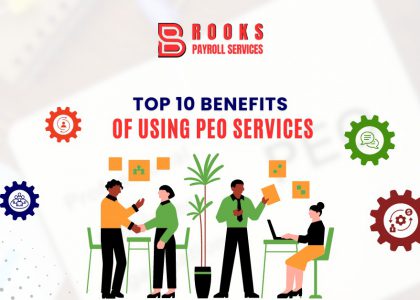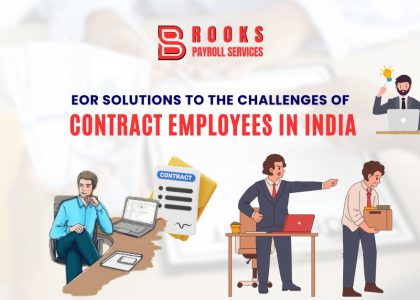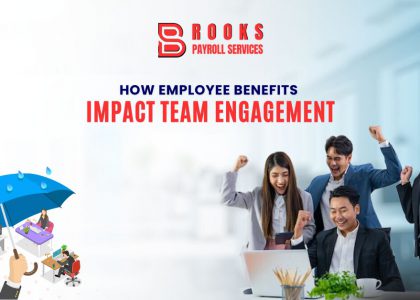In today’s competitive business landscape, providing comprehensive employee benefits is more crucial than ever. However, managing these benefits can be complex and time-consuming. This is where Professional Employer Organizations (PEOs) come in, offering streamlined solutions for benefits administration. In this article, we’ll delve into how PEO benefits administration works and explore the process of managing employee benefits efficiently.
What is a PEO?
Definition
A Professional Employer Organization (PEO) is a company that provides comprehensive HR solutions for small and medium-sized businesses. By entering into a co-employment relationship, a PEO takes on various administrative and compliance responsibilities, allowing businesses to focus on their core operations.
History and Evolution
The concept of PEOs emerged in the 1960s as a response to the increasing complexity of HR and compliance tasks. Over the years, PEOs have evolved to offer a wide range of services, including payroll, compliance assistance, and benefits administration.
Core Functions
At its core, a PEO manages HR functions such as payroll, tax compliance, risk management, and employee benefits. This co-employment model means the PEO shares certain employer responsibilities with the client company.
Understanding Benefits Administration
Definition
Benefits administration involves the management of employee benefits such as health insurance, retirement plans, and other perks. It includes tasks like plan selection, enrollment, communication, and compliance with regulatory requirements.
Types of Employee Benefits
Employee benefits can be categorized into several types:
- Health Insurance: Medical, dental, and vision plans.
- Retirement Plans: 401(k) and other pension schemes.
- Paid Time Off: Vacation, sick leave, and holidays.
- Employee Assistance Programs (EAPs): Support for personal and professional issues.
Significance in Modern Workplaces
Providing competitive benefits is essential for attracting and retaining top talent. It enhances employee satisfaction, reduces turnover, and fosters a positive work environment.
How PEOs Manage Benefits Administration
Overview of the Process
PEOs streamline benefits administration by handling all aspects of the process, from plan selection to employee communication. They leverage their expertise and relationships with benefits providers to offer competitive packages.
Integration with HR Services
PEOs integrate benefits administration with other HR services, creating a seamless experience for both employers and employees. This integration ensures that all HR functions are aligned and managed efficiently.
Technology and Tools Used
Modern PEOs use advanced technology platforms to manage benefits administration. These tools facilitate online enrollment, real-time updates, and detailed reporting, enhancing the overall efficiency of the process.
Types of Benefits Managed by PEOs
Health Insurance
PEOs offer a variety of health insurance plans tailored to the needs of different businesses. They handle the enrollment process, manage claims, and ensure compliance with health care regulations.
Retirement Plans
PEOs manage retirement plans such as 401(k) schemes, providing employees with options to save for their future. They also ensure these plans meet legal and regulatory standards.
Paid Time Off
PEOs track and manage paid time off, ensuring employees receive the vacation, sick leave, and holidays they are entitled to. This helps maintain accurate records and reduces administrative burdens on businesses.
Employee Assistance Programs
PEOs offer Employee Assistance Programs (EAPs) to support employees with personal and professional challenges. These programs can include counseling services, legal assistance, and financial advice.
The Role of PEOs in Compliance
Navigating Legal Requirements
PEOs are well-versed in the legal aspects of benefits administration. They help businesses navigate the complex landscape of federal, state, and local regulations, ensuring compliance at all times.
Ensuring Compliance with Regulations
By keeping up-to-date with the latest regulatory changes, PEOs ensure that all benefits plans comply with current laws. This minimizes the risk of penalties and legal issues for businesses.
Risk Management
PEOs play a crucial role in managing risks associated with benefits administration. They provide guidance on best practices and help implement strategies to mitigate potential risks.
Advantages of Using a PEO for Benefits Administration
Cost Savings
By leveraging their buying power, PEOs can secure better rates on benefits packages, resulting in significant cost savings for businesses. They also reduce the need for in-house HR staff, further lowering expenses.
Expertise and Resources
PEOs bring a wealth of expertise and resources to the table. Their knowledge of benefits administration ensures that businesses can offer competitive packages without the administrative burden.
Employee Satisfaction and Retention
Providing comprehensive benefits through a PEO can enhance employee satisfaction and retention. Employees appreciate the convenience and quality of benefits, leading to a more motivated and loyal workforce.
Challenges and Considerations
Potential Drawbacks
While PEOs offer many advantages, there are potential drawbacks to consider. These can include loss of control over certain HR functions and the need to share sensitive employee information with the PEO.
Important Considerations for Businesses
When choosing a PEO, businesses should consider factors such as the PEO’s reputation, the quality of their benefits packages, and their expertise in compliance. It’s essential to select a PEO that aligns with the company’s values and goals.
How to Choose the Right PEO
Selecting the right PEO involves thorough research and due diligence. Businesses should evaluate multiple PEOs, request references, and compare their offerings before making a decision.
Case Studies
Success Stories
Several businesses have successfully leveraged PEOs for benefits administration. For example, a small tech startup partnered with a PEO to offer competitive benefits, resulting in improved employee retention and satisfaction.
Lessons Learned
These success stories highlight the importance of choosing the right PEO and the positive impact it can have on a business. Key lessons include the value of comprehensive benefits and the benefits of expert management.
Future Trends in PEO Benefits Administration
Technological Advances
The future of PEO benefits administration lies in technology. Advances such as AI and automation will continue to streamline processes, making benefits administration more efficient and user-friendly.
Shifting Workforce Demands
As the workforce evolves, so too will the demands for benefits. PEOs will need to adapt to these changes, offering more flexible and diverse benefits packages to meet the needs of a dynamic workforce.
Predictions for the Future
Looking ahead, the role of PEOs in benefits administration will only grow. Businesses will increasingly rely on PEOs to navigate the complexities of benefits management and to provide competitive advantages in the talent market.
Conclusion
In conclusion, PEOs play a vital role in benefits administration, offering expertise, efficiency, and compliance. By partnering with a PEO, businesses can provide comprehensive benefits to their employees, enhancing satisfaction and retention while focusing on their core operations.
FAQs
What is a PEO?
A PEO, or Professional Employer Organization, is a company that provides comprehensive HR solutions, including benefits administration, to businesses through a co-employment relationship.
How does a PEO benefit small businesses?
PEOs benefit small businesses by handling HR tasks, reducing administrative burdens, ensuring compliance, and offering competitive benefits packages that attract and retain talent.
What types of benefits can a PEO manage?
PEOs manage a variety of benefits, including health insurance, retirement plans, paid time off, and employee assistance programs, among others.
How do PEOs help with compliance?
PEOs help with compliance by staying up-to-date with legal regulations, ensuring that benefits plans meet current laws, and mitigating risks associated with non-compliance.
What should I consider when choosing a PEO?
When choosing a PEO, consider their reputation, the quality of their benefits packages, their expertise in compliance, and how well they align with your company’s values and goals.










